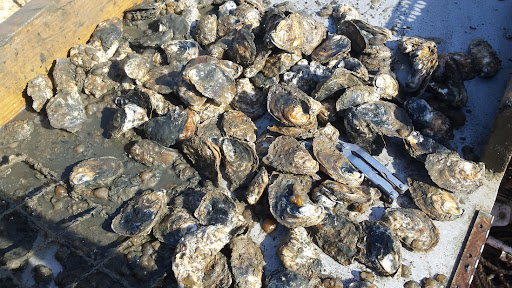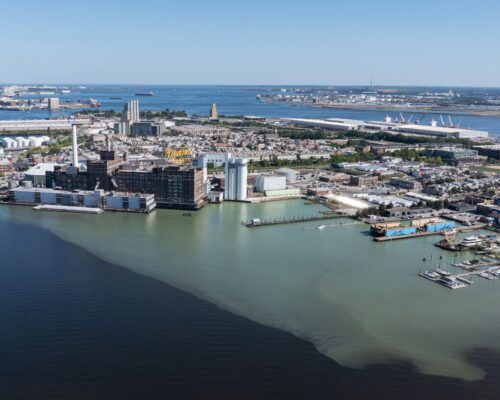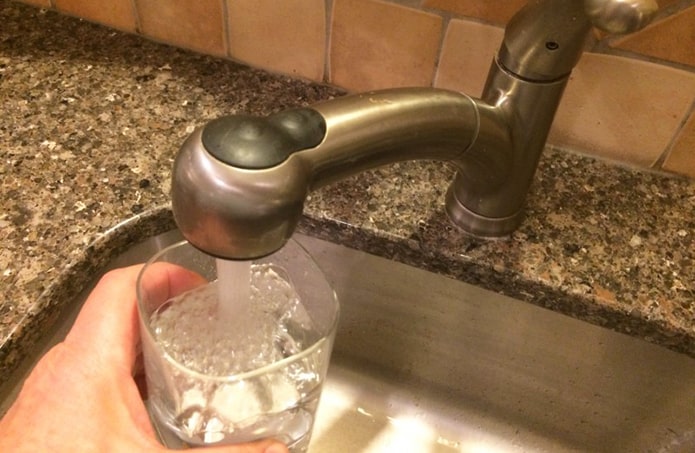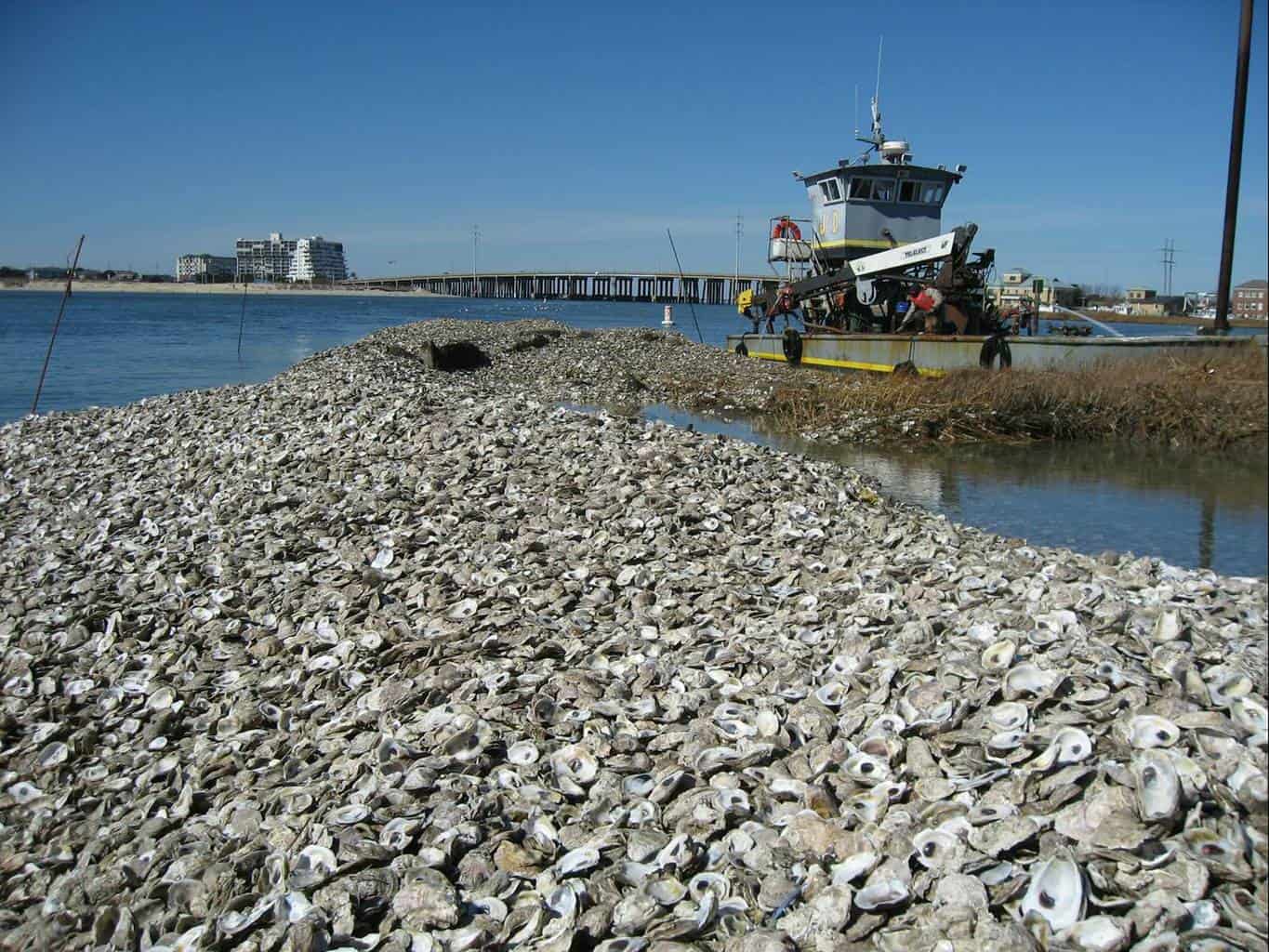27 people got sick from Maryland-grown oysters, due to an unfortunate breakdown in communication following a sewage spill. Now, the Maryland Department of the Environment (MDE) says it’s making changes to make sure this doesn’t happen again.
When record-breaking coastal flooding hit southern Maryland on Halloween weekend, a sanitary sewer overflowed on Piney Point Road in St. Mary’s County. That’s on St. George Creek, near the spot where the St. Marys and Potomac rivers meet. The St. Mary’s County Metropolitan Commission (known as Metcom) announced the spill and issued a “no water contact” advisory for 10 days, posting signs around the area. St. Mary’s County notified MDE, but MDE says the information failed to be relayed to the state’s shellfish program, who would have then temporarily closed the nearby harvesting area.
Meanwhile, an aquaculture operation called Shore Thing Shellfish LLC harvested its oysters from the affected area in St. George Creek, according to MDE, and sold them to a pop-up restaurant in Louduon County, Va. The Loudon Health District reported an outbreak of illness at events where a pop-up food spot called Nomini Bay Oyster Ranch LLC served oysters. This “temporary food establishment” operated at several breweries and wineries in Loudoun and Fauquier counties (Loudoun: Dirt Farm Brewery, Vanish Brew Pub; Fauquier: Barrel Oak Winery). They reportedly bought some of their oysters from Shore Thing in St. Mary’s County.
People who had eaten oysters sold by Nomini Bay reported gastrointestinal illness the weekend after the sewage spill, Nov. 7-8. Loudon Health District’s Epidemiologist Kevin Embrey says several oyster customers were identified who also developed gastrointestinal illness after eating oysters from the pop-up that same weekend. In all, 27 people were sickened. The majority were visiting from outside of Loudon County, Va., and only two reported seeking medical help after they became ill.
MDE spokesman Jay Apperson says if oysters live in polluted waters, their natural filtering process can concentrate disease-causing organisms associated with raw sewage, making people sick if they eat the oysters. Because filter feeders like oysters and clams are often eaten raw, it’s imperative that they be harvested from waters that are not polluted. Shellfish harvesting closures are issued when pollution reaches a certain level; however, that didn’t happen in this case—not until Nov. 13, when MDE first heard of the illnesses. An emergency closure was put into place immediately, but it was too late. Apperson says, “To our knowledge, this is the first time something of this nature has happened.”
Bay Bulletin asked if this incident has prompted any changes at MDE, and Apperson tells us MDE is retraining and working on coordination within its programs to prevent another incident. “We also plan to reach out to Metcom to determine whether there are any improvements that can be put in place to address flooding at the pump station during weather events,” he says.
Metcom says the unusually high tidal surge from Oct. 28-30 inundated all the grinder pumps in the area, which began pumping tidal water to the Piney Point pumping station. Metcom dispatched haulers who pumped 495,000 gallons of sewage out of the station between Thursday evening through Saturday afternoon of the flood event. But, the Metropolitan Commission says, the haulers couldn’t keep pace with the incoming flows. That caused more than 25,000 gallons of sewage to overflow into the waterway over three days.
Metcom believes the overflow was extremely diluted and ” was comprised primarily of storm surge waters,not sewerage flow,” unlike a typical raw sewage spill.
MDE says it has investigated water conditions in the affected area more recently, and as of last Thursday, Nov. 18, there was no detection of fecal bacteria. Water quality was improved enough that the emergency closure was lifted Nov. 20. Oysters can once again be safely harvested and public health protected, according to water samples MDE tested.
That’s good news for Shore Thing Shellfish, who were busy delivering Thanksgiving oysters this week. As of this writing, Bay Bulletin is awaiting comment from Shore Thing.
While there are two other aquaculture leaseholders in the affected area, MDE determined they had not harvested oysters since the summertime and thus weren’t affected by the spill.
Even if the patients sickened by the oysters and Shore Thing have been able to bounce back quickly, Potomac rivershed’s steward, Riverkeeper Dean Naujoks, doesn’t want MDE to get away with this mistake.
“It is inexcusable for MDE to ignore the release of 25,000 gallons of raw sewage to shellfish harvesting waters reported on the 28th of October then delay issuing a closure until 19 days later … MDE is responsible for people getting sick! This is not the fault of the distributor or watermen who deserve better from MDE. It took an investigation by the Virginia Public Health Department for MDE to finally issue an emergency advisory 19 days too late! We are demanding an investigation into MDE’s handling of this issue,” Naujoks told Bay Bulletin.
–Meg Walburn Viviano




